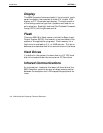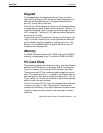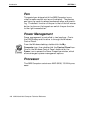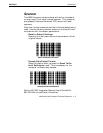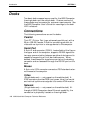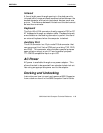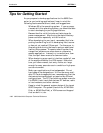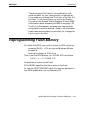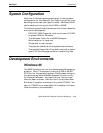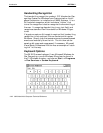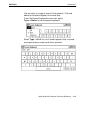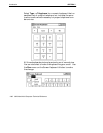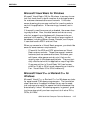
SECTION 1Introduction
1-10 6620 Hand-Held Computer Technical Reference
Tips for Getting Started
As you prepare to develop applications for the 6620 Com-
puter (or port existing applications), keep in mind the
following basic considerations, ideas, and suggestions:
" Windows 95 is the operating system. If you are expe-
rienced with this operating system, you should be able
to start developing or porting applications.
" Become familiar with the tools and techniques for
power management. Monitoring the state of battery
power can be an especially critical function.
" When developing for pen input, remember that inter-
preting handwriting is still a developing field; accura-
cy has not yet reached 100 percent. Furthermore, in-
terpreting and storing the results puts an additional
load on the processor. Excessive use of handwriting
recognition software can slow down an otherwise
speedy application. Instead, try to use buttons, item
lists, and pull-down menus for common tasks.
" When designing a pen-centric interface, make full use
of the area provided by the VGA screen. Make but-
tons, pull-down menus, text entry fields, etc. large
enough for easy, accurate use in a mobile or high-pres-
sure environment.
" Make your applications drive-independent. Do not
hard-code drive designations. Utilize the many avail-
able PC Card storage solutions, remembering that the
devices can be moved about as required by different
configurations. The PC Card slots can accept nonvola-
tile SRAM, flash, hard disk devices, RF devices, radio
or land modems, and other devices.
" Keep in mind the general system design of the target
6620 Computer: file system (hard drive, 40 MB San-
Disk, or 85 MB SanDisk), a VGA screen and keypad
that are built-in, etc.





